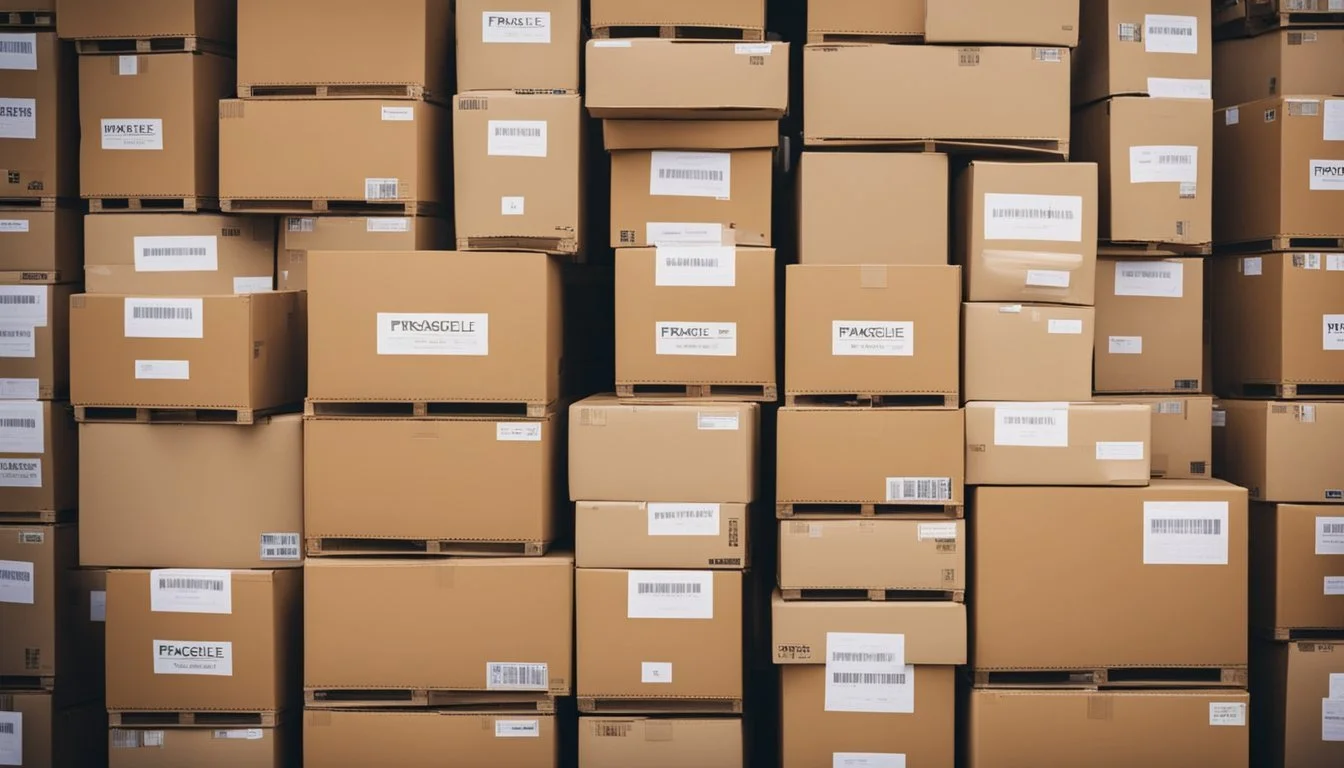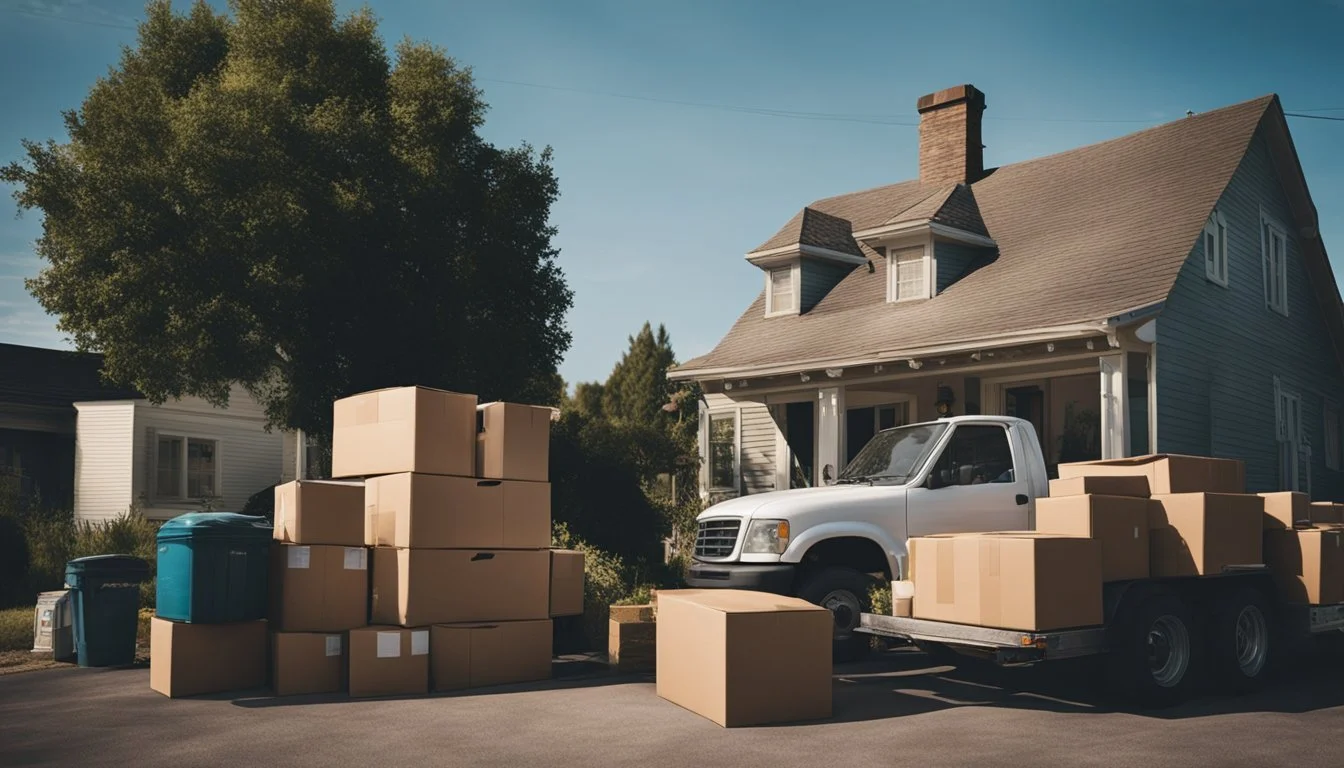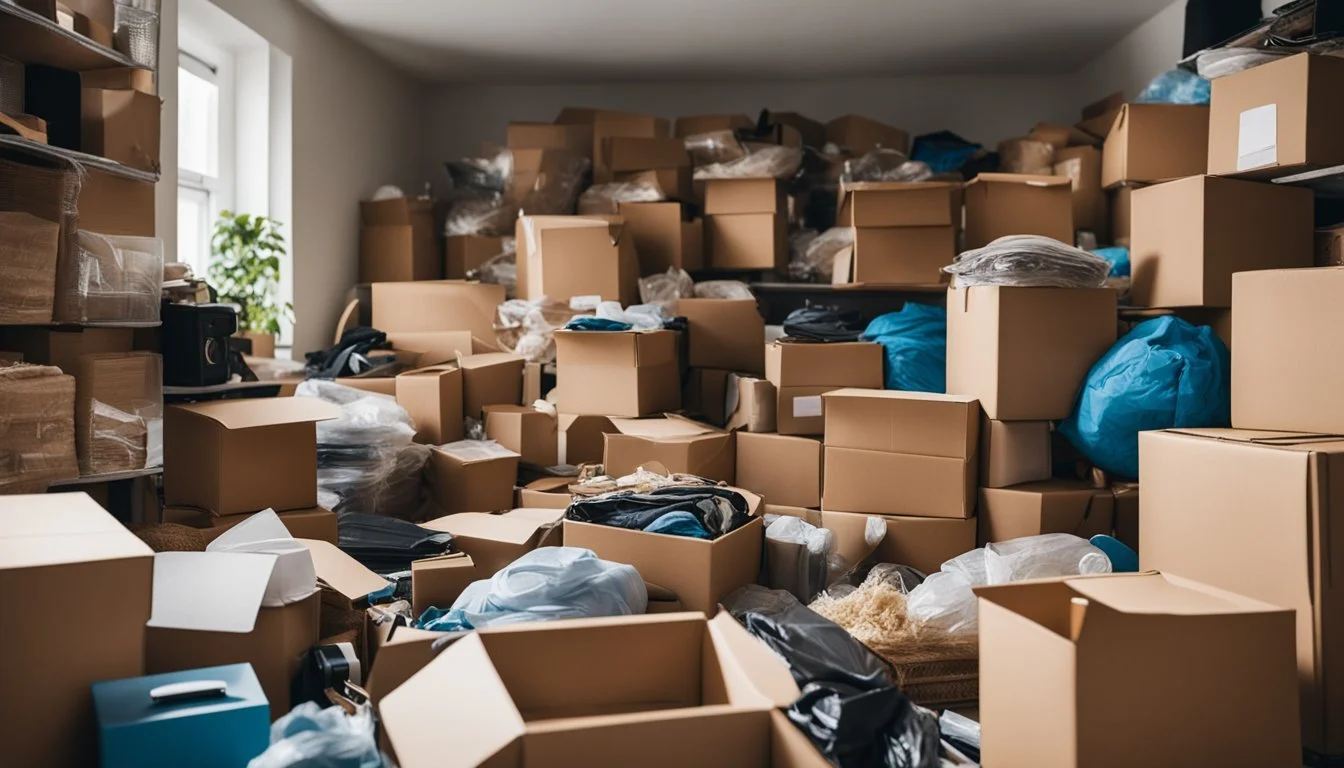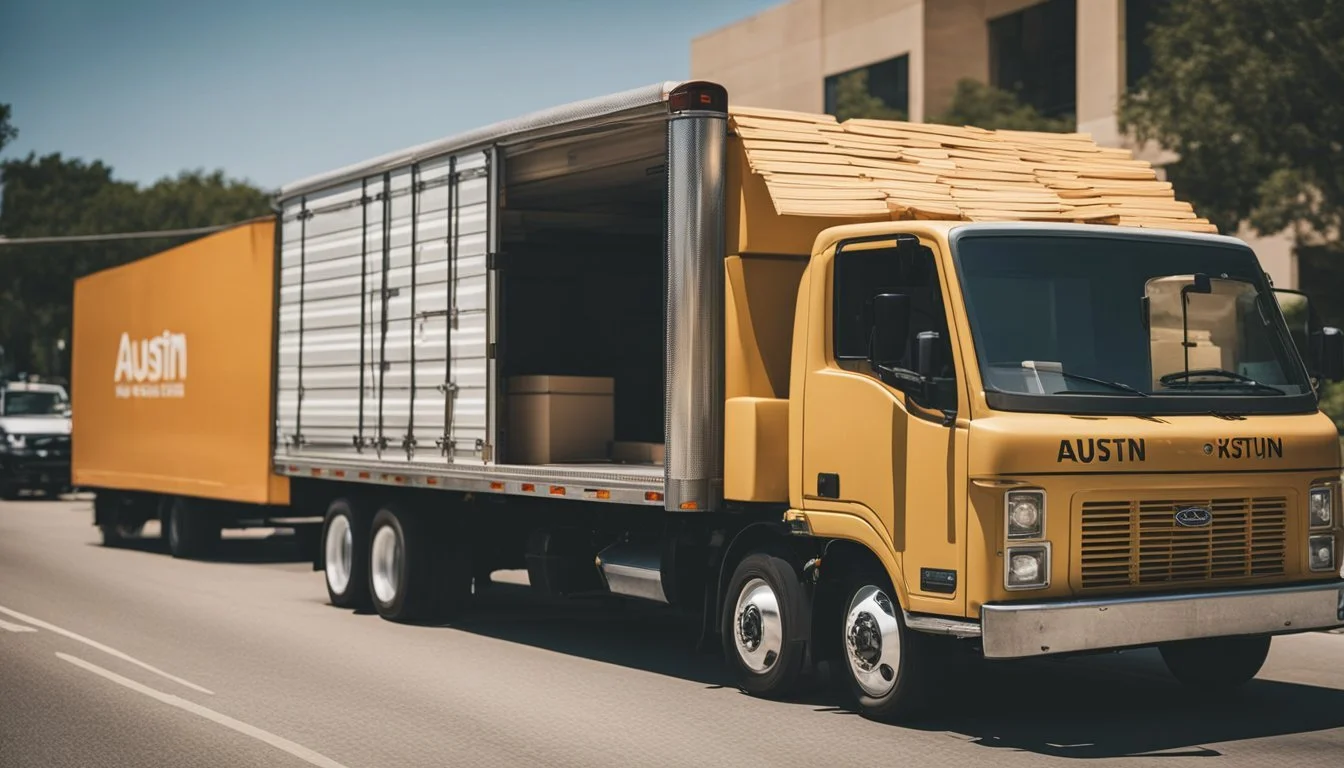9 Common Moving Mistakes to Avoid When Moving to Austin
A Practical Guide
Relocating to Austin, Texas, offers an exciting opportunity filled with potential. The city's rich culture, thriving job market, and vibrant social life make it a popular destination for many. Understanding common moving mistakes is crucial to ensuring a smooth and stress-free transition.
Despite its appeal, moving to a new locale comes with its own set of challenges. Preemptively avoiding common pitfalls can save time, money, and energy, making the move more enjoyable. This article aims to illuminate these common mistakes and provide practical solutions for those considering Austin as their new home.
1) Underestimating the Cost of Living
When moving to Austin, many people fail to accurately gauge the cost of living. While Austin has a vibrant cultural scene and booming tech industry, living expenses have risen considerably.
Housing is a significant factor. Rental and property prices are higher than in many other Texas cities. Budgeting accurately for rent or mortgage payments is crucial.
Transportation costs can also catch newcomers off guard. Though public transportation exists, many residents rely on cars. Gas, maintenance, and parking fees add up quickly.
Utilities and services should not be overlooked. Energy bills, especially during hot summer months, can be substantial. Internet and other service costs are on par with urban centers.
Food and entertainment are additional areas where expenses can be high. Dining out, attending cultural events, and enjoying the nightlife are all common in Austin but come with a price tag.
Properly researching and planning for these costs can prevent financial strain. Use cost of living calculators and speak to locals to get a realistic picture. This preparation can make the transition to Austin smoother and more sustainable.
2) Not Researching Neighborhoods
When moving to Austin, overlooking neighborhood research can lead to frustration and regrets.
Different neighborhoods in Austin offer varied lifestyles and amenities. From bustling downtown areas to quiet suburban surroundings, it is essential to choose an area that aligns with personal preferences and daily needs.
Factors such as school quality, proximity to work, and local amenities can greatly impact day-to-day life.
Traffic patterns and public transportation options can also influence the choice of neighborhood. For those relying on public transit, it's crucial to find areas with convenient bus or train routes.
Safety is another critical aspect to consider. Researching crime rates and community reviews can provide peace of mind and help find a safe and secure area to live.
Austin's diverse neighborhoods mean that there is something for everyone, but identifying the right fit requires thorough research.
3) Forgetting to Transfer Utilities
Forgetting to transfer utilities is a mistake many people make when moving. It's critical to ensure that essential services such as electricity, water, gas, and internet are ready before moving into a new home.
Start the process of transferring utilities at least 2-4 weeks before the move. Contact each utility provider to schedule the transfer. This ensures there won't be any interruptions in services that are vital for daily life.
Make a checklist of all necessary utilities. This includes electricity, water, gas, internet, and possibly cable TV. Notifying these providers in advance allows for any adjustments or scheduling needed to ensure services are active upon your arrival.
Reach out to the current utility providers at your new home. Confirm the cutoff dates for services at your old address and the start dates at the new one. Proper scheduling will help avoid any overlap or gaps in service, making your transition smoother.
4) Skipping the Home Inspection
Skipping the home inspection can lead to unexpected problems. This step is crucial to identify any potential issues in the property, such as structural defects or electrical problems.
Home inspections provide peace of mind. They reveal the true condition of the house, which can save money on future repairs.
In Austin, certain properties may have unique challenges, like foundation issues due to soil composition. A thorough inspection can uncover these problems early. Not addressing these beforehand might lead to expensive fixes later.
Buyers who skip inspections miss out on expert advice. Inspectors offer valuable insights and tips for maintenance, which are particularly useful for first-time homeowners moving to Austin.
Always budget for this step. It’s a worthwhile investment that ensures the property is safe and sound.
5) Neglecting to Declutter Before Packing
One of the most common mistakes people make when moving to Austin is failing to declutter before packing. This oversight can lead to increased stress and unnecessary costs.
When individuals move without decluttering, they often pack items they no longer need. This can result in higher moving expenses due to the increased volume of belongings.
Using the Rule of 5 can be particularly effective. By choosing five items at a time to keep, donate, sell, or discard, individuals can streamline the process, making it less overwhelming.
Starting the decluttering process months in advance is highly recommended. Beginning with lesser-used rooms can ease individuals into the task, gradually refining their skills as they go.
Avoiding procrastination is crucial. Decluttering earlier helps prevent the rush and chaos of dealing with unwanted items at the last minute. This approach allows people to make thoughtful decisions while reducing the overall burden of the move.
Neglecting to sort through belongings can also lead to frustration upon arrival at the new home. Unnecessary items can take up valuable space, complicating the unpacking process and making the new place feel cluttered right from the start.
By taking the time to declutter, individuals can ensure a smoother, more efficient move to Austin. This practice not only reduces physical clutter but also alleviates mental stress, making the transition more manageable.
6) Overlooking Traffic During Commute Planning
Austin is known for its vibrant culture, but it also suffers from significant traffic congestion. Many newcomers overlook this issue when planning their daily commute.
Failing to account for peak traffic times can lead to delays and frustration. It's wise to research major routes and monitor traffic patterns before moving.
Using apps like Google Maps can provide real-time traffic updates. This helps in determining the best times to travel and alternative routes.
Additionally, consider the location of your new home in relation to your workplace. Areas known for heavy traffic may add considerable time to your commute.
Public transportation options like buses and trains might also be worth exploring. They can provide a reliable alternative to driving and help avoid traffic jams.
7) Ignoring Weather Considerations
Weather in Austin can be unpredictable. Ignoring this can lead to significant issues. Packing items improperly for weather conditions can cause damage.
During summer, Austin is hot and humid. Belongings sensitive to heat may need special packing. In addition, high temperatures can affect people, making moving physically challenging.
Rain is another factor to consider. While Austin has fewer rainy days, sudden storms can occur. Wet conditions can make moving furniture and boxes difficult and potentially hazardous. Secure waterproof covers for your belongings to avoid water damage.
Check weather forecasts in advance. Plan your move during a period with favorable conditions when possible. If working with professional movers, confirm their policy regarding weather-related delays. This can help avoid unexpected costs or complications on moving day.
8) Failing to Hire Licensed Movers
Hiring unlicensed movers can lead to a range of problems. They may lack accountability, making it difficult to address any losses or damages. Without the proper licenses, they might not follow industry standards, increasing the risk of mishandling your belongings.
Licensed movers are subject to regulations that ensure they meet specific criteria. This includes adequate insurance coverage, which offers you protection in case of accidents. Licensed movers are also more likely to have trained staff who understand how to handle delicate items properly.
An unlicensed mover might offer lower prices, but the potential risks far outweigh the savings. Hidden costs can appear, and disputes are harder to resolve without official oversight. By choosing a licensed mover, you ensure you're working with a professional, reducing the stress of your move.
To verify a mover's license, check with relevant local or national regulatory bodies. In the United States, the Federal Motor Carrier Safety Administration (FMCSA) maintains a database of licensed movers. Confirming this information in advance can save you from numerous headaches later.
Hiring licensed movers is not just about compliance; it’s about your peace of mind. Ensuring they have the proper credentials means you're entrusting your possessions to professionals who are held to high standards.
9) Not Budgeting for Storage Solutions
Moving involves numerous hidden costs, one of which is storage. People often underestimate how much space their belongings will take. Portable storage solutions are frequently overlooked in budgeting, leading to last-minute expenses.
In Austin, storage facilities can vary greatly in price. Without proper budgeting, you might find yourself in a bind. Unexpected expenses can strain your moving budget and cause unnecessary stress.
Portable storage units offer convenience but come at a cost. Monthly rental fees, delivery charges, and insurance can add up. Plan ahead and allocate funds specifically for storage.
Neglecting to budget for storage can impair the overall efficiency of your move. It's crucial to incorporate storage costs early in the planning phase to avoid surprises.
Understanding Austin's Neighborhoods
Choosing where to live in Austin depends on various factors such as lifestyle preferences, commuting needs, and budget constraints. Each neighborhood offers unique characteristics that can suit different tastes and requirements.
Choosing the Right Area to Live In
Austin's neighborhoods each have their own distinct vibe and offerings. East Austin, for instance, is known for its eclectic mix of food trucks, art spaces, and a younger demographic. The median rent here is around $1,700, making it relatively affordable for singles and young professionals. Downtown Austin provides a more urban experience with high-rise apartments and proximity to commercial hubs, but it comes with higher living costs.
North Austin neighborhoods like Oakwood Hollow Pud offer a suburban feel with a diverse housing mix, ranging from townhomes to single-family homes. This area presents a tranquil and affordable escape within city limits.
For families, South Austin offers a more residential atmosphere with good schools and parks, making it attractive to those looking to settle down. The choice should depend on lifestyle needs, proximity to work or schools, and community amenities.
Commuting and Traffic Conditions
Austin's traffic is a significant consideration when choosing a neighborhood. Commuting from North Austin into downtown can be challenging due to congested highways, particularly during rush hours. Those living in areas like East Austin might find easier access to downtown through a network of public transport and bike paths.
South Austin has its own commuting challenges, with heavy traffic along main routes like South Congress Avenue. However, it also offers various alternatives such as MetroRapid buses that can ease daily commutes. Living closer to central areas reduces commute times but usually at a higher cost of living.
Before deciding, potential residents should consider current traffic patterns, available public transportation options, and how these align with their daily routines and lifestyle goals.
Planning Your Move
Effective planning is crucial when moving to Austin. Key steps include setting a comprehensive budget and hiring a reliable moving company to ensure a smooth transition.
Setting a Moving Budget
Creating a moving budget is essential to avoid unexpected costs. Begin by listing all potential expenses, such as packing supplies, transportation, and utility deposits.
Example costs:
Expense Estimated Cost ($) Moving Truck Rental $150 - $300 Packing Supplies $50 - $150 Utility Deposits $100 - $200 Professional Movers $500 - $1,500
Consider allocating a contingency fund for unforeseen expenses. Always keep a record of receipts and use budgeting tools or apps to track spending. This preparation helps maintain financial control throughout the move.
Hiring Reputable Moving Companies
Choosing the right moving company is vital. Start by researching companies with positive reviews and strong reputations.
Steps to follow:
Get Quotes: Contact multiple moving companies for estimates, aiming for at least three.
Verify Credentials: Ensure the movers are licensed and insured by checking their USDOT number on the FMCSA website.
Check Reviews: Read reviews on platforms like Yelp or Google and consider any complaints filed with the Better Business Bureau (BBB).
Ask Questions: Inquire about additional fees, the moving process, and insurance coverage.
Carefully vetting movers helps protect personal belongings and ensures a reliable moving experience.







